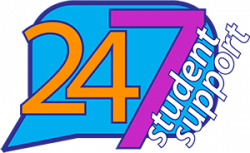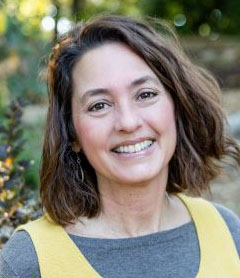
Hello, and Happy New Year!
If you have followed our asynchronous workshop series, How to Design a Successful Innovation Grant, from the beginning — and have completed most of the “homework” — then this means you have trekked the most difficult part of the journey!
It gets easier from here, I promise.
The series began in September, and it will end in March 2022, the same month Innovation Grant proposals are due to the Virginia Western Educational Foundation.
Hopefully this approach will help you slowly explore your ideas — on your own time, at your convenience — as you continue to juggle your regular to-do list.
If you’re just now joining us, it’s OK! You still have plenty of time to catch up.
Let’s review some of our Lab Lessons so far, including:
#1: Grant proposals are not time wasted … even if you FAIL
#2: Know the rules of the game
#3: Focus on NEEDS first, solutions second
#5 Relationships are the secret sauce
Lab Lesson #6 is what inspired this series: Baby steps work.
Haven’t they already? If you have been diligently completing each step of the series since last fall — and you’re still here! — then point proven.
So let’s go to the next baby step, which will ease you into 2022.
I want you pick a day in January when you know you will have a block of free time.
And on that day, I want you to set an appointment for one hour.
This is going to be the time you write the first draft of the application.
Just one hour, no big whoop.
And well before you reach that 1-hour appointment on your calendar, I want you to make sure you have the most recent Innovation Grant application, which is usually released by the Educational Foundation before January in-service. If it hasn’t been shared in the weekly Bulletin, then I would reach out directly to Carolyn Payne to be 100% sure you have the right version.
When you start your 1-hour draft session, I want you note the first direction on the application: Complete this form in Word.
So go ahead and create your draft application in Word.
Next, focus on the Project Title. Often this becomes an afterthought, but it would be a good time to draft some strong contenders.
This is when I would ask yourself: What does success look like? What does success feel like?
Really sit with that question and envision the best possible outcomes.
Could you see it on a postcard from the future?
Or play it in your head like a movie?
Vividly imagining your success is going to help you address the other segments in the application, most notably the:
- Project goals and objectives
- Project timeline
- Evaluation / assessment
Spend that hour writing as much as you can. Let it flow, don’t be overly critical. If you get stuck, move on to the next question.
We have plenty of time to refine.
So what’s next?
We will return on Feb. 2, when we think about our project from the perspective of the grant reviewers.
Let’s look at our progress so far:
| February | Sustainability: Why would this grant be a good investment? |
| March | Finish line: Proposal ready to submit! Huzzah! |
Here’s your homework checklist to help stay on track:
By the end of January:
- Schedule a 1-hour writing appointment.
- Make sure you have the most current Innovation Grant application, available through Carolyn Payne.
- Make a copy of the application in Word.
- Ask yourself: What does success look like?
- Start drafting!
You can do this!






 Shelley Lyons is glad to be back on campus as she is a Virginia Western alum, and has served as the Administrative Officer for Grants Administration at Virginia Western since early 2022. Prior to VWCC, her career focus was within the Human Services and Arts fields. She wrote her first grant in 1996 on a whim and has continued to plan and learn since that time. She most enjoys seeing a well-planned project come to fruition, where funder, project manager and beneficiaries can all feel success and see impact.
Shelley Lyons is glad to be back on campus as she is a Virginia Western alum, and has served as the Administrative Officer for Grants Administration at Virginia Western since early 2022. Prior to VWCC, her career focus was within the Human Services and Arts fields. She wrote her first grant in 1996 on a whim and has continued to plan and learn since that time. She most enjoys seeing a well-planned project come to fruition, where funder, project manager and beneficiaries can all feel success and see impact.